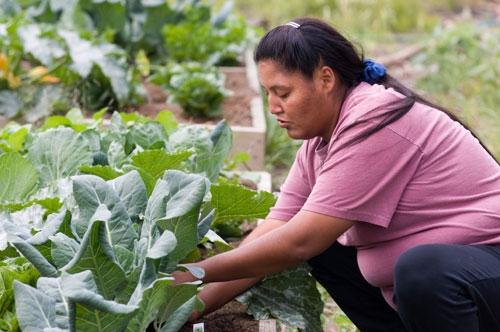Posts Tagged: planning
Passing land and legacy on to the next generation
Passing family land from one generation to the next can pose emotional problems, financial problems and legal problems, noted a feature story in The Willits News. UC Cooperative Extension has been offering a series of succession planning workshops, titled "Ties to the Land," to help families deal with these issues.
”Family forests create many benefits through their stewardship actions, but the legacy can fall prey to the confusing details of land titles, permits, and inheritance if families have not crafted a succession plan,” said Bill Stewart, UC Cooperative Extension forestry specialist and organizer of the series. “This is especially true for owners who do not live in the county where their forest is. Their heirs have probably spent little time on the land, and the lack of shared goals can become a problem.”
With succession planning, land owners clarify their values and goals for the forest or ranch, determine their heirs' interest in the property, learn legal and business considerations, and understand the financial impacts of ownership transfers across generations.
Urban agriculture: An old model made new
Yesterday, I moderated a panel on urban agriculture at the annual meeting of the California Planning Association, which was held in Santa Barbara. The room was packed: urban agriculture is a hot topic these days. Micro-farms, backyard chickens, bee keeping, raw food markets all present challenges – and opportunities - for planners and communities. In our discussions yesterday, the idea of “scale” and definition came up frequently. The consensus of the panel? Within urban areas, urban agriculture should encompass everything from backyard gardens to commercial agricultural operations.
In practice, urban agriculture has been a persistent and organized activity in urban areas for well over a century. And one could argue that places like The Common in Boston make “urban agriculture” an even older model. Farming on the urban fringe - or even in the urban core, at some scale - has long been a feature of American life. Farmers markets are not a new feature of American life; they represent one of the oldest models of food distribution … from farmer direct to consumer.
The Panic of 1893, an economic downturn that brought distress to both urban and rural populations, was particularly difficult on Americans; there were few social safety nets for the poor and destitute. (Programs like Social Security and the Supplemental Nutrition Assistance Program – food stamps – came much, much later). The Panic of 1893 created a dangerous social climate in America, particularly in urban areas teeming with unemployed factory workers. The crisis brought to the fore a model of relief gardening that quickly took hold across the United States.
The “Potato Patch Farms” model, also called the “Detroit Experiment,” emerged under the leadership of Detroit’s mayor, Hazen Pingree. Pingree’s model connected hundreds of acres of vacant land in Detroit with unemployed workers and their families, who were provided with the materials, tools and education to garden the unused land. This was done in a systematic fashion. Pingree’s idea of ethical relief was met with strong resistance from many who believed that the unemployed – many of them immigrants – were too lazy to work. Skeptics, of course, were wrong: 3,000 families applied for the 975 allotments available the first year of the program (1894). The program grew during the next two seasons (1,546 families participated in 1895, 1,701 families gardened in 1896).
The city’s agricultural committee kept records of the investments made into the program and the value of crops harvested. In 1896, the value of food produced in Detroit’s potato patches was greater than the money provided to needy citizens by the “poor commission.”
The idea quickly spread to other urban areas: New York City, Buffalo, Philadelphia, Boston and Seattle were among the nineteen cities sponsoring vacant lot projects on some scale, according to an 1898 report. The model Pingree developed in Detroit was particularly innovative and visionary for its time; by the early 1900s, there was a national vacant lot cultivation organization that encouraged urban agriculture and city gardening. These programs clearly provided a rationale for the cultivation of vacant lots – “slacker land” - during the Liberty/Victory Garden effort in World War I.
To this historian, today’s economic climate feels quite a lot like 1893. And urban agriculture is once again coming to the fore as a viable, necessary and welcome addition to the food landscape. Detroit and many, many other urban areas, faced with issues created by depopulation, high unemployment, food deserts and other enormous challenges, are again looking at urban agriculture to provide solutions.
I applaud the dozens of planning professionals who attended this session, engaging in iterative discussions with panelists and other participants. These planners will play a vital role in creating public policies that support healthy and resilient food systems in our communities ... policies that acknowledge that increasingly, communities want more explicit connections with their food.

Micro-farms, backyard chickens, bee keeping and raw food markets are popular forms of urban agriculture.

